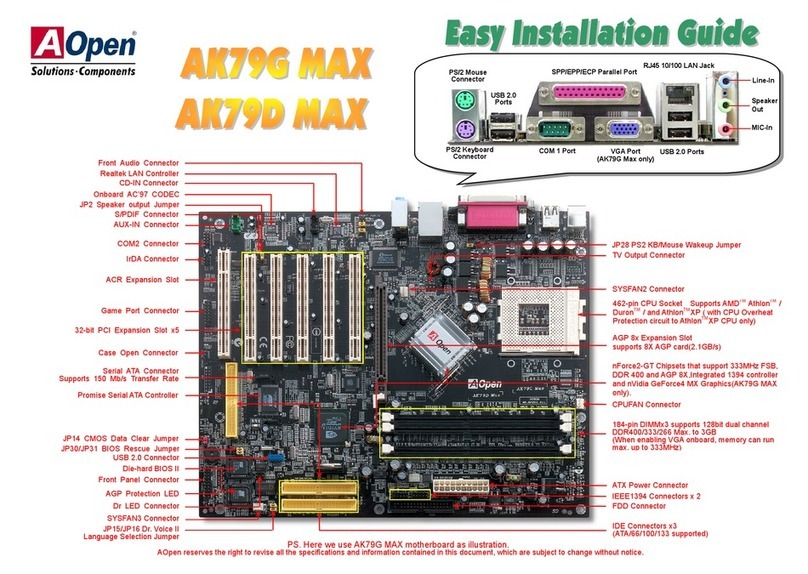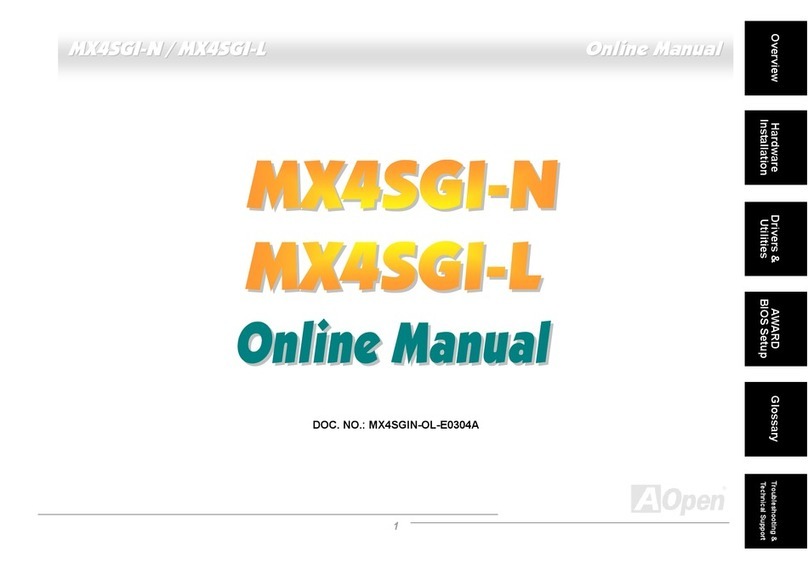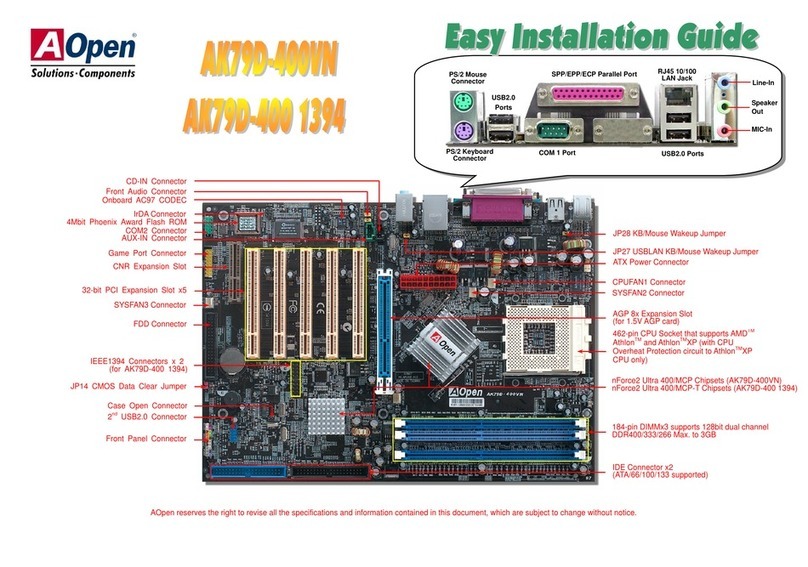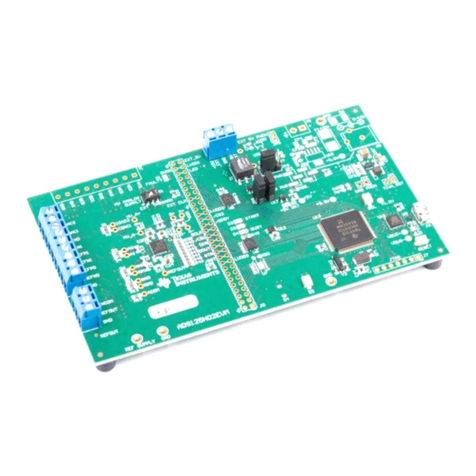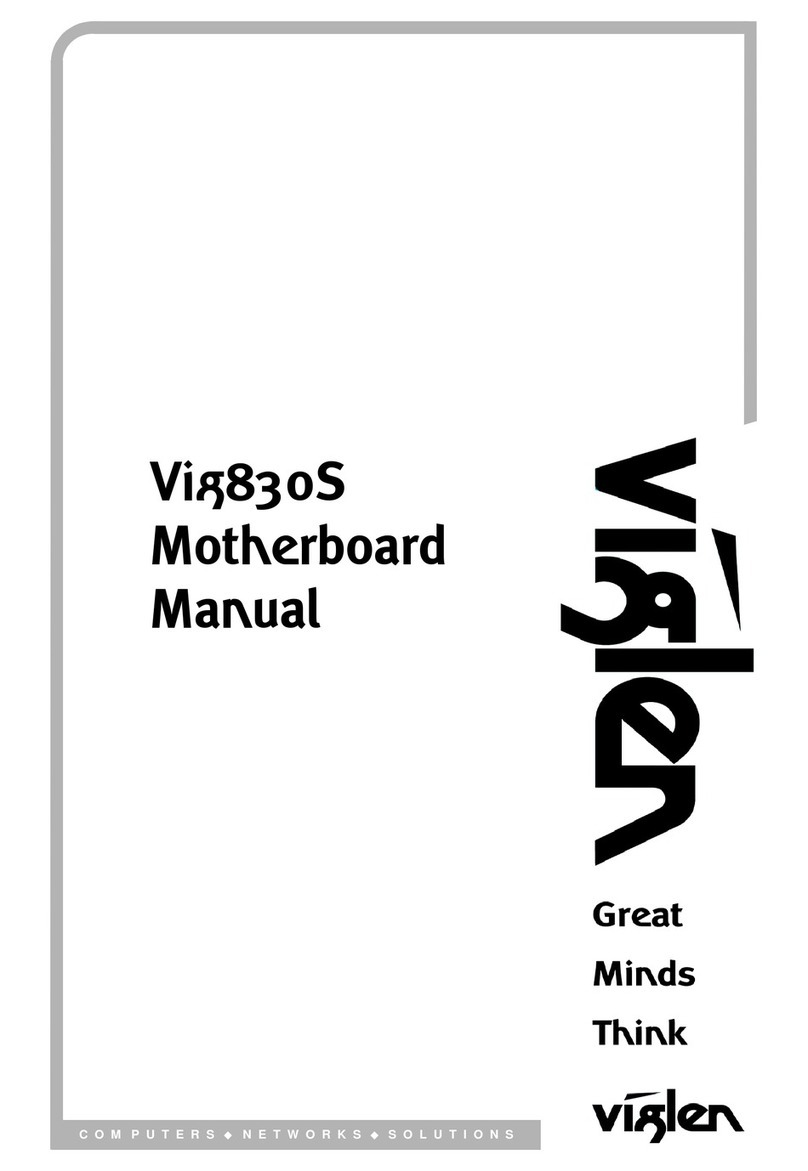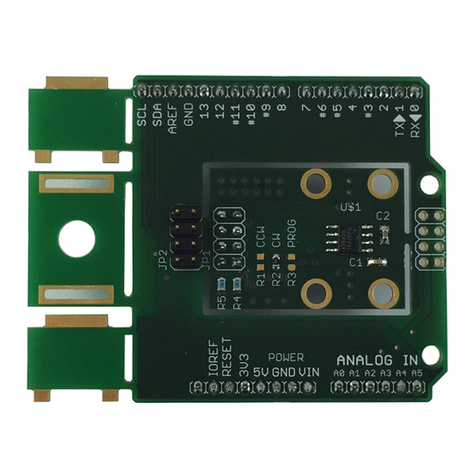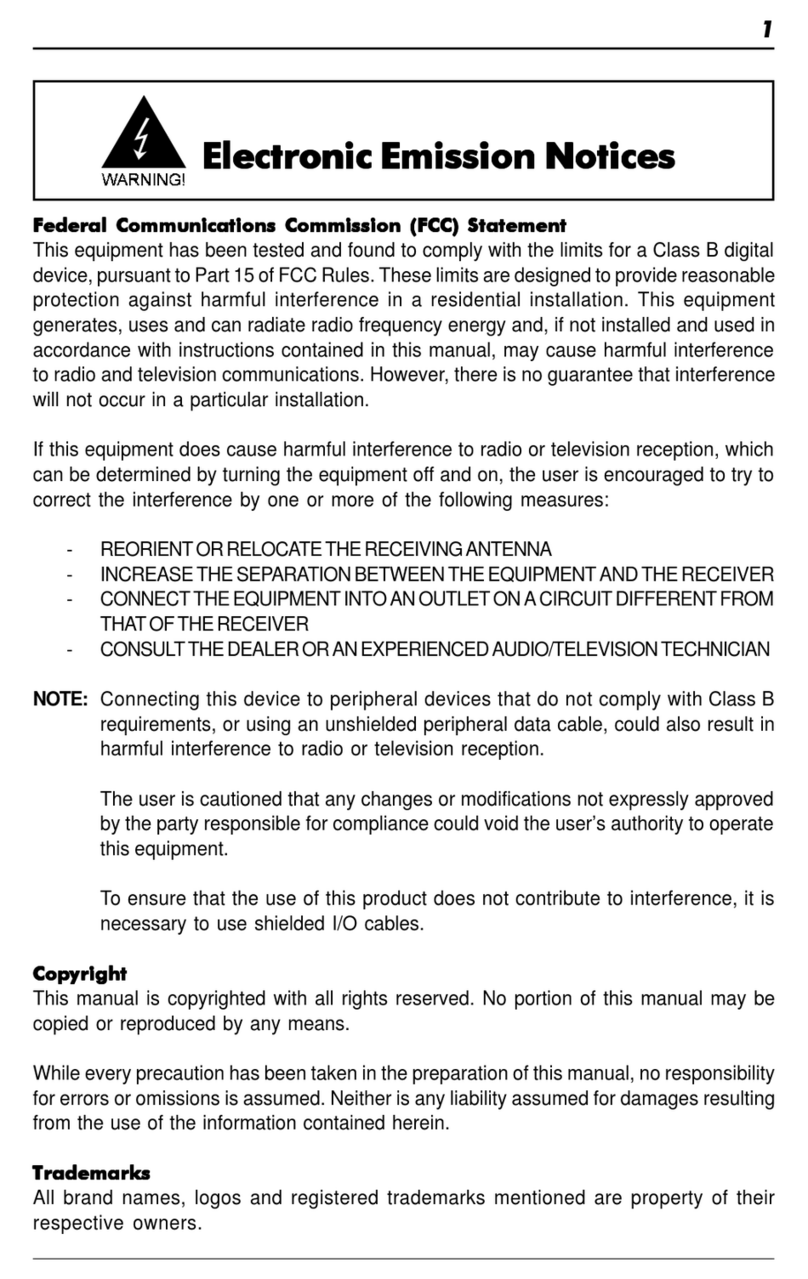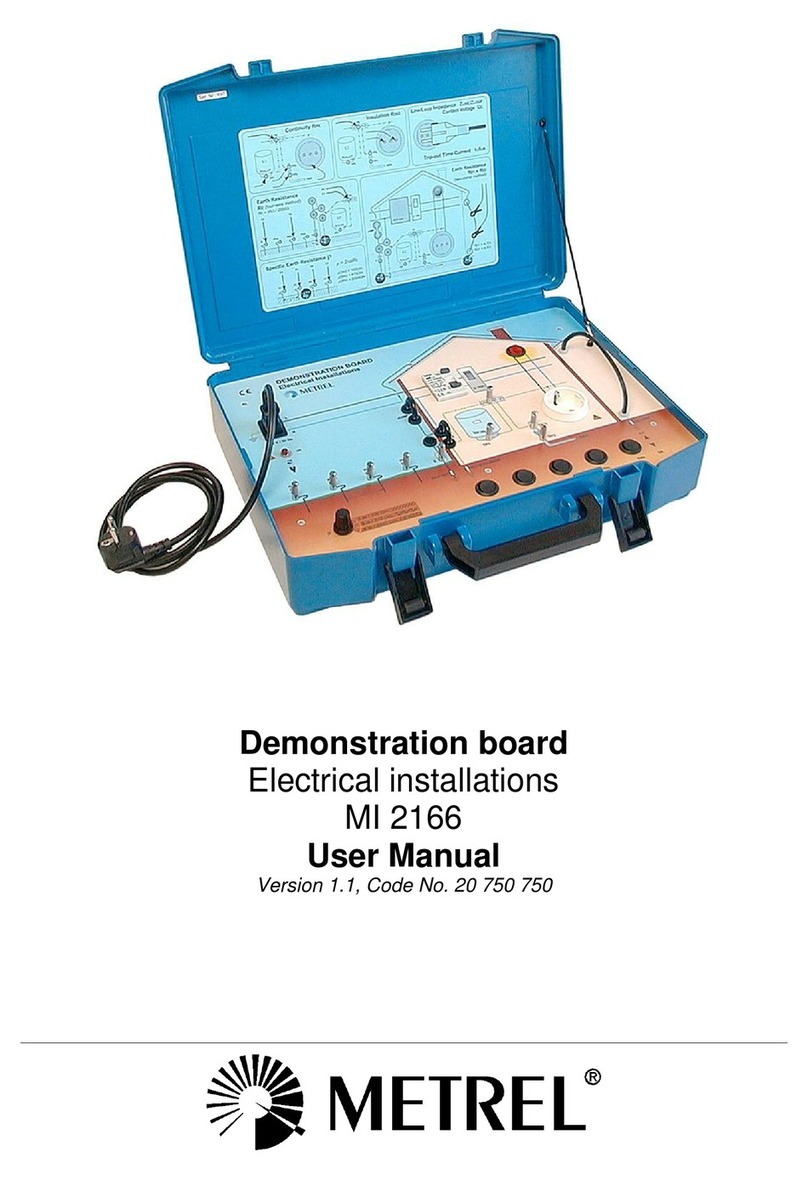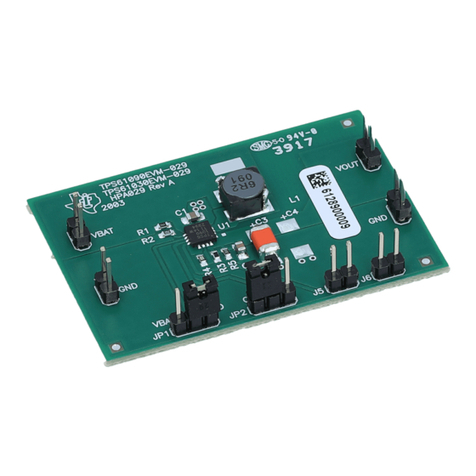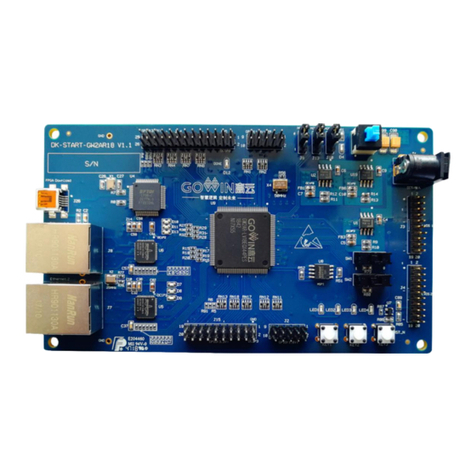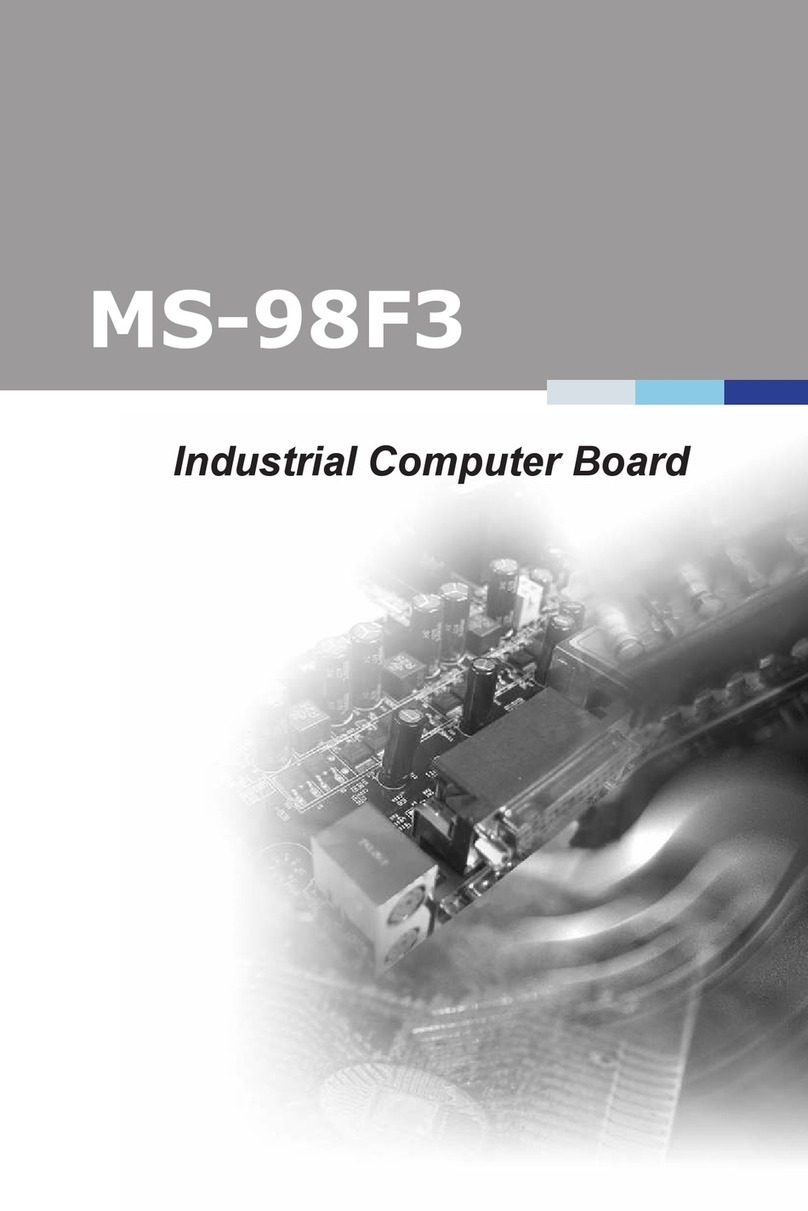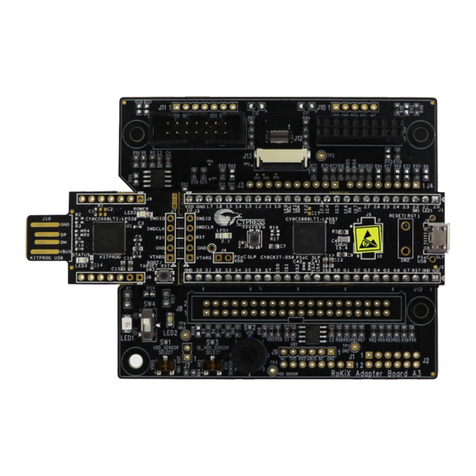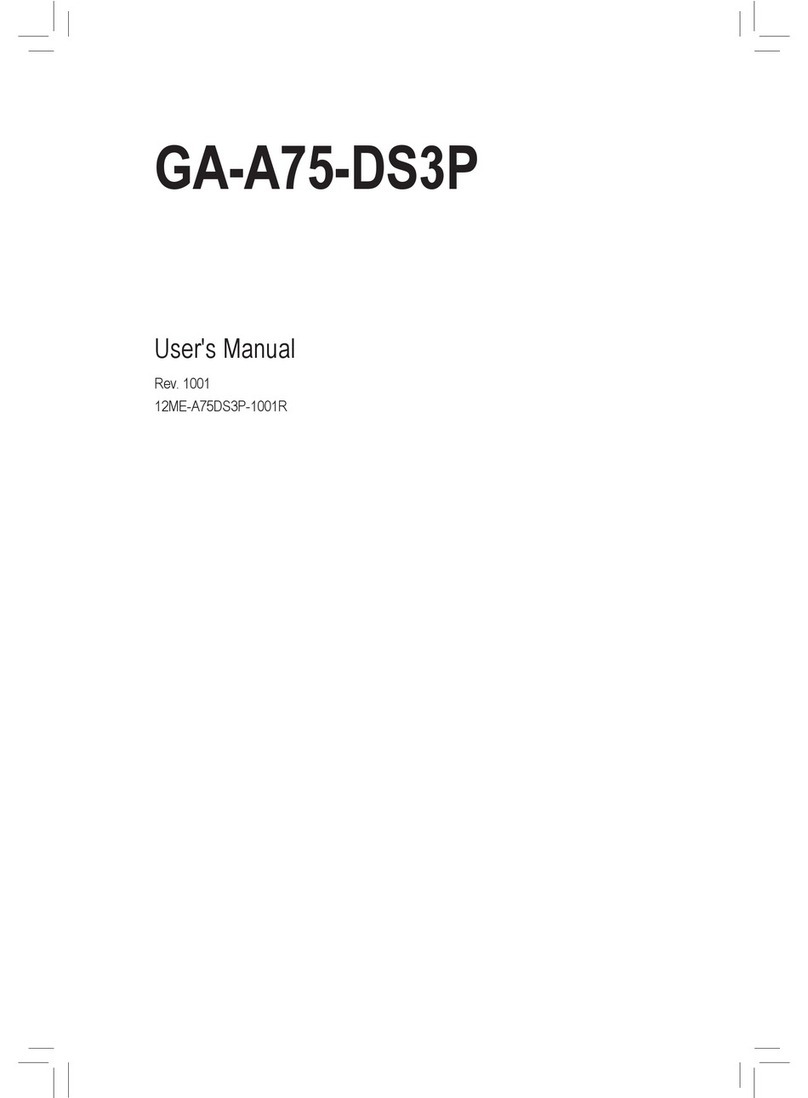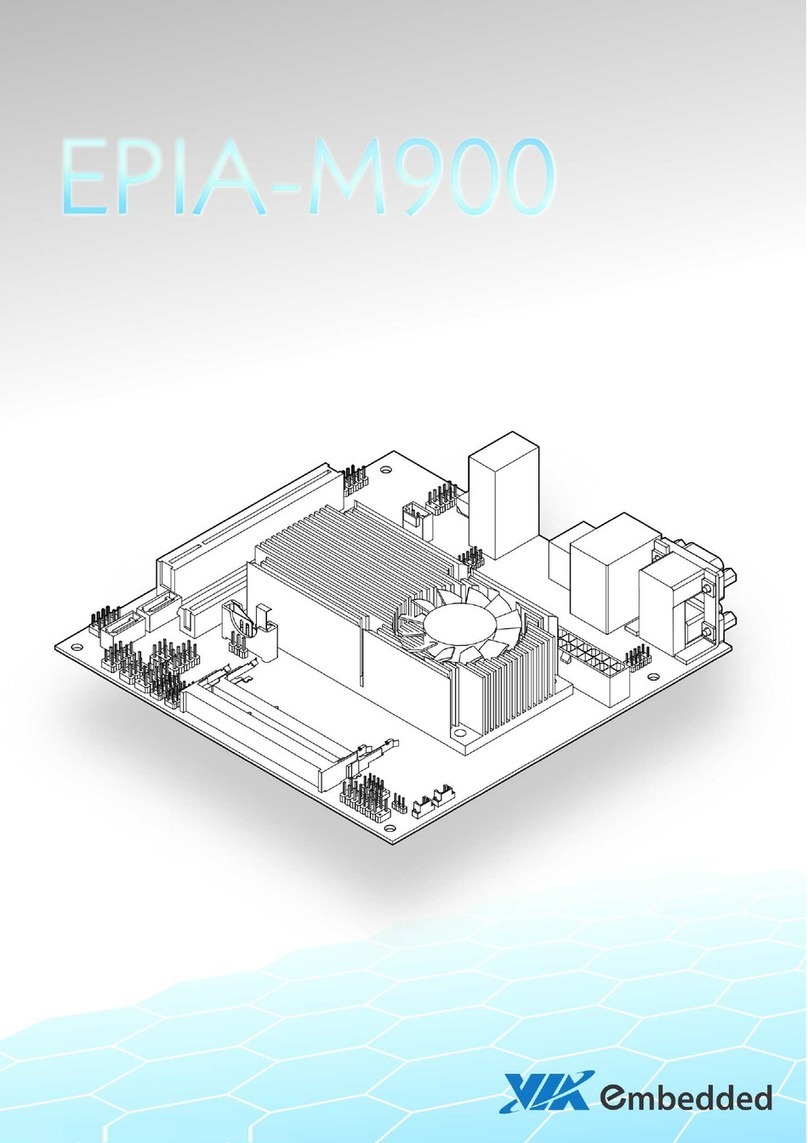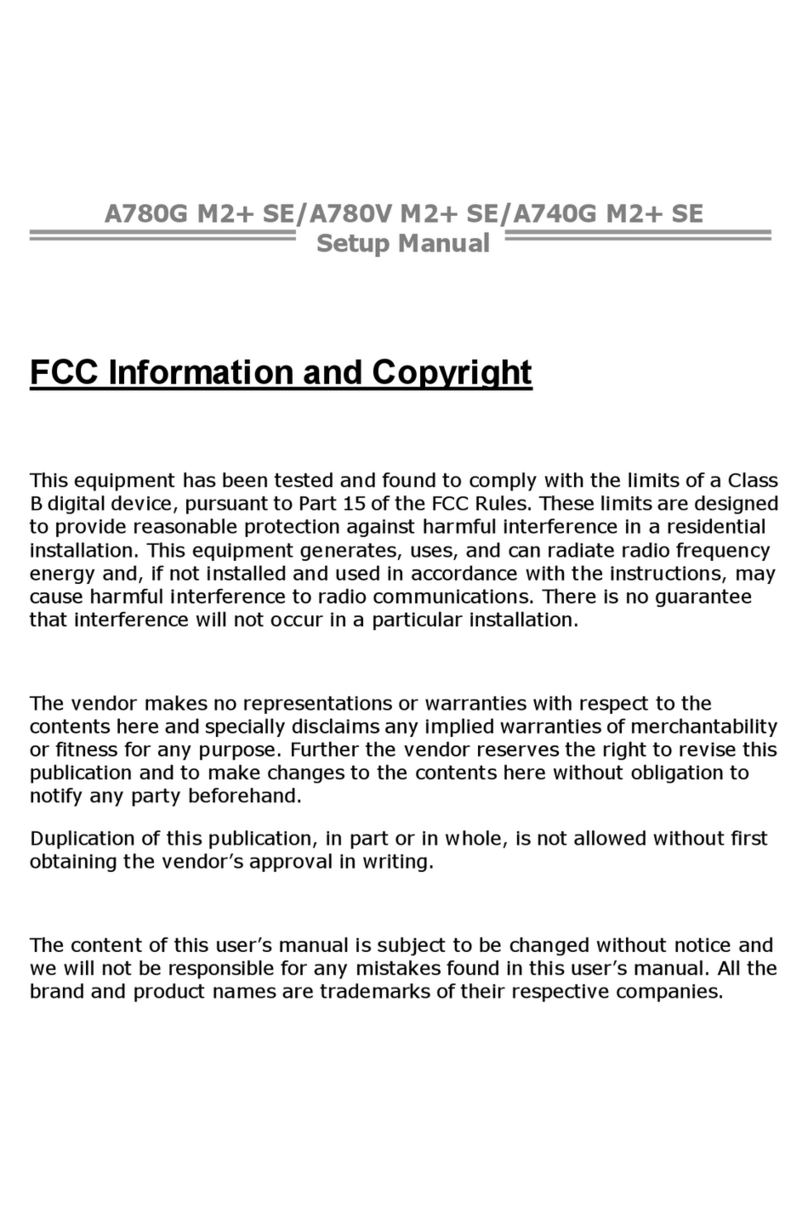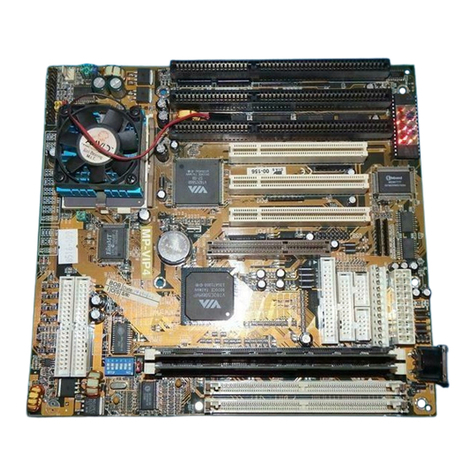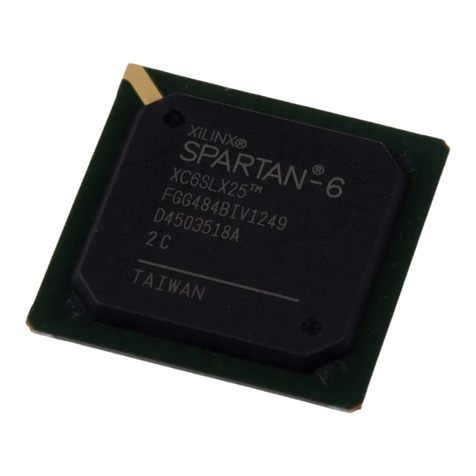AOpen AX63PRO User manual

A
AX
X
6
63
3
P
Pr
r
o
o
O
On
nl
li
in
n
e
e
M
Ma
an
nu
ua
al
l
AX63 Pro

A
AX
X
6
63
3
P
Pr
r
o
o
O
On
nl
li
in
n
e
e
M
Ma
an
nu
ua
al
l
!"#
$% $$#$
#$#$$%&$$#$
#$
'$

A
AX
X
6
63
3
P
Pr
r
o
o
O
On
nl
li
in
n
e
e
M
Ma
an
nu
ua
al
l
$ #('$##$#
1
11
1)"*
2
22
2 )+##,)-
3
33
3 ""
4
44
4 ").$$#"
5
55
5 "/"
6
66
6 "!'"
7
77
7 01!)++$
8
88
8 +"*(#
9
99
9
10
1010
10 )$+#,234-
11
1111
11 ) *#

A
AX
X
6
63
3
P
Pr
r
o
o
O
On
nl
li
in
n
e
e
M
Ma
an
nu
ua
al
l
)
"
56""+
7)$688"$
6889%+!"'
5&4:!;+2'
$
!
#
0
& !)+
7
2'
01 !)+
21
2'$1<
+!01
'
"33!'
1.+$
="*7
5$0
0
"*"
+#7>
/"
" #
5&8+!;")"'
9
2
2'
$
"
"688 )
;?? ).
+$9 5&3+!;")"'

A
AX
X
6
63
3
P
Pr
r
o
o
O
On
nl
li
in
n
e
e
M
Ma
an
nu
ua
al
l
!"
#$
%
&"
$''
$"
!"
#$(!
!"
')!$*'
+,*'
#
-.&/
$"
$,
011
2
$%&%'$'
(

A
AX
X
6
63
3
P
Pr
r
o
o
O
On
nl
li
in
n
e
e
M
Ma
an
nu
ua
al
l
H
Ha
ar
rd
dw
wa
ar
re
e
$=$
Electrostatic discharge (ESD) can damage your processor, dis
k
drives, expansion boards, and other components. Always observe the
following precautions before you install a system component.
1.Do not remove a component from its protective packaging until yo
u
are ready to install it.
2.Wear a wrist ground strap and attach it to a metal part of the syste
m
unit before handling a component. If a wrist strap is not available,
maintain contact with the system unit throughout any procedure
requiring ESD protection.

A
AX
X
6
63
3
P
Pr
r
o
o
O
On
nl
li
in
n
e
e
M
Ma
an
nu
ua
al
l
When should I Clear CMOS?
1. Boot fail because of overclocking…
2. Forget password…
3. Troubleshooting…
@"+#
"+$
6#$"$
& /$2&
8156$&08
56#$60&
A"/$'2&

A
AX
X
6
63
3
P
Pr
r
o
o
O
On
nl
li
in
n
e
e
M
Ma
an
nu
ua
al
l
!
!
"
"#
#
$
$
%
%
&
&
=$:#;2'*$)#.
#'$!)++$)$B
$$$$#A7#4<
#+;&$$2'
You have to wait for system to
successfully boot from operation system
(such as Windows or DOS) before the
Wake-On-Keyboard/Mouse can take effect.
This is because the information of how to
support this function must be stored into
Winbond W83977EF and then you can use
it for next power on.

A
AX
X
6
63
3
P
Pr
r
o
o
O
On
nl
li
in
n
e
e
M
Ma
an
nu
ua
al
l
3/)/"$,
3011
45/")26
72)" '5
!$

A
AX
X
6
63
3
P
Pr
r
o
o
O
On
nl
li
in
n
e
e
M
Ma
an
nu
ua
al
l
'
'
(
(
"*6!"*
80$%
&
8#
Some CPU fans do not have
sense pin, so that cannot support fan
monitoring.

A
AX
X
6
63
3
P
Pr
r
o
o
O
On
nl
li
in
n
e
e
M
Ma
an
nu
ua
al
l
'
'
&
&
)
)
"*7)+'$ "* 0
"*(#!)+$=$
"* ..2
=$0#
"* 0$"+#
/9$$,$$$:
/%
"*7)+ "*
6*
,#"* -
-.
&/
"*(
!$
/"
-

A
AX
X
6
63
3
P
Pr
r
o
o
O
On
nl
li
in
n
e
e
M
Ma
an
nu
ua
al
l
$$"*7)"* #
6878A7!$$="*"
7 '
High CPU core voltage may be able to
increase CPU speed for overclocking, but you may
damage the CPU or reduce the CPU lifecycle.

A
AX
X
6
63
3
P
Pr
r
o
o
O
On
nl
li
in
n
e
e
M
Ma
an
nu
ua
al
l
"*=$0#"*(#!)+$
=$
VIA Apollo Pro 133 chipset supports
maximum 133MHz FSB and 66MHz AGP clock,
higher clock setting may cause serious system
damage.
If your system hangs or fails to boot
because of overclocking, simply use <Home>
key to restore the default setting (233MHz).

A
AX
X
6
63
3
P
Pr
r
o
o
O
On
nl
li
in
n
e
e
M
Ma
an
nu
ua
al
l
!!
!!
!!
!!
!!!
!!!
!!!"#
!!!"

A
AX
X
6
63
3
P
Pr
r
o
o
O
On
nl
li
in
n
e
e
M
Ma
an
nu
ua
al
l
!!!"
!!!"#
!!!"
!!!"#
!!!"
!!!"#

A
AX
X
6
63
3
P
Pr
r
o
o
O
On
nl
li
in
n
e
e
M
Ma
an
nu
ua
al
l
*
*$
$
+
+
(
(
$
$
,
,
=$$#$")
+!'C#$'# '
;;
!
" #$%
!
##"$%
!
"&$%
;;;; ;;

A
AX
X
6
63
3
P
Pr
r
o
o
O
On
nl
li
in
n
e
e
M
Ma
an
nu
ua
al
l
!"#$
$ !
$ !
$%&&'( !
$ !
$%&&'( !
VIA Apollo Pro 133 chipset supports maximum 133MHz FSB
and 66MHz AGP clock, higher clock setting may cause serious system
damage.

A
AX
X
6
63
3
P
Pr
r
o
o
O
On
nl
li
in
n
e
e
M
Ma
an
nu
ua
al
l
6?40$)'#"688#$
6&AC!#+$$
'
'
'
The driving capability of new generation chipset
is limited due to the lack of a memory buffer (to
improve performance). This makes DRAM chip coun
t
an important factor to take into consideration when
you install DIMMs. Unfortunately, there is no way tha
t
the BIOS can identify the correct chip count, you
need to calculate the chip count by yourself. The
simple rule is:
!"##$%%%%..
(

A
AX
X
6
63
3
P
Pr
r
o
o
O
On
nl
li
in
n
e
e
M
Ma
an
nu
ua
al
l
)?&'2#
0'+#
To identify 2-clock and 4-clock DIMM, you may
check if there are traces connected to the golden
finger pins 79 and 163 of the SDRAM. If there are
traces, the SDRAM is probably 4-clock; otherwise, it
is 2-clock.
To identify single-side or double-side DIMM,
check golden finger pin 114 and pin 129. If there are
traces connected to pin 114 and pin 129, the DIMM
is probably double-side; otherwise, it is single-side.

A
AX
X
6
63
3
P
Pr
r
o
o
O
On
nl
li
in
n
e
e
M
Ma
an
nu
ua
al
l
(
(
$ 1. '#' $'
$ $ ) #
D+$ E !)+ +$
") > 1. '$
#$
1 $ #
/
)&0$
$ 0$
'3*
)
'*
+,-)
.
.
.
.
(/0
.
. ('1
(2*
0
Other manuals for AX63PRO
1
This manual suits for next models
2
Other AOpen Motherboard manuals

AOpen
AOpen AX4GE Max Setup guide
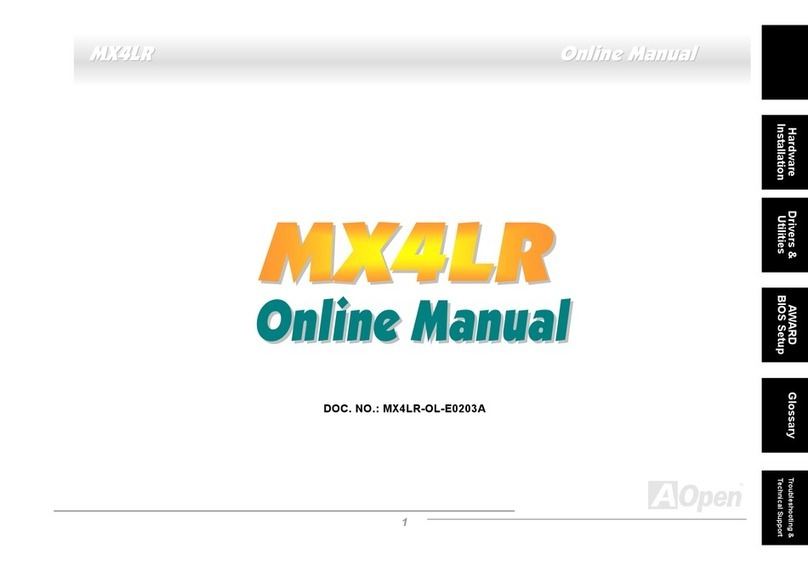
AOpen
AOpen MX4LR TV Setup guide

AOpen
AOpen AK77-8XMAX User manual
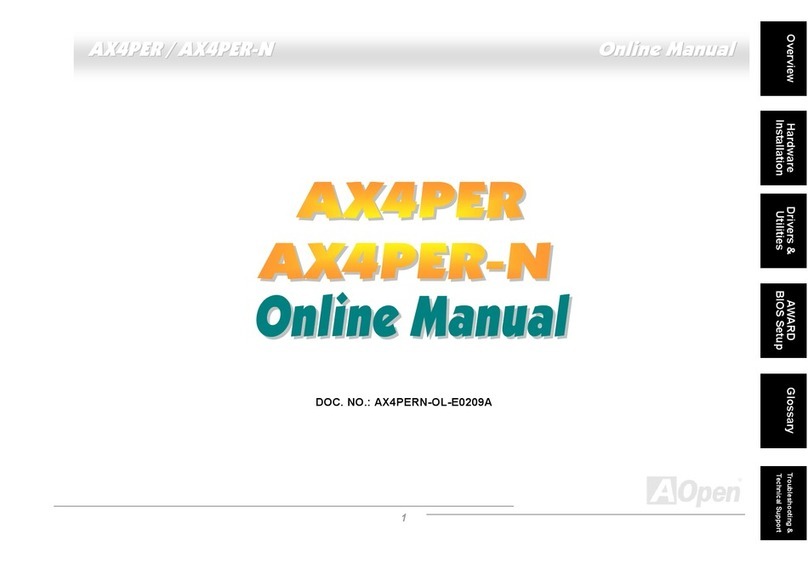
AOpen
AOpen AX4PER Setup guide

AOpen
AOpen MX4BS Setup guide
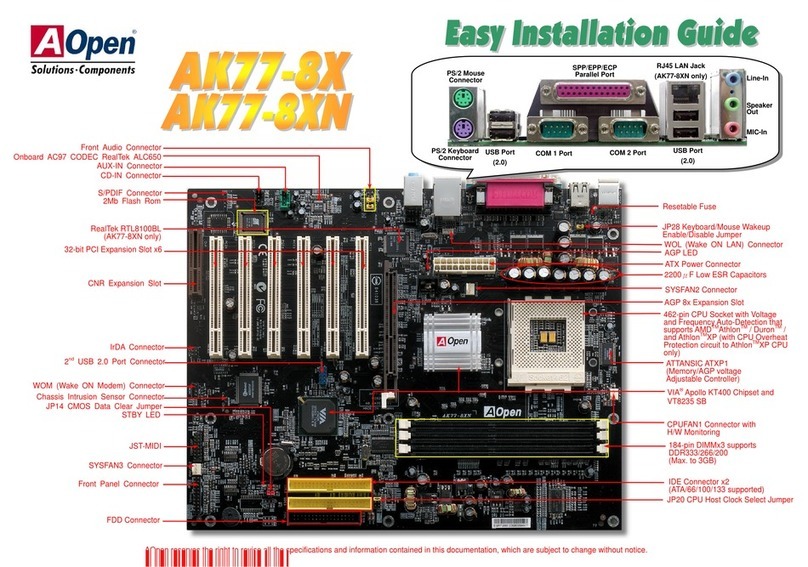
AOpen
AOpen AK77-8X Datasheet
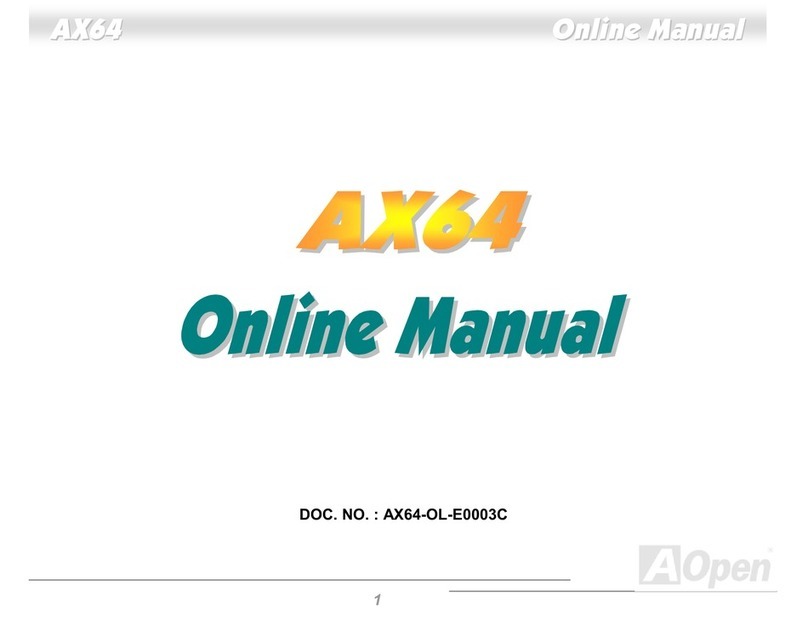
AOpen
AOpen AX64 Setup guide
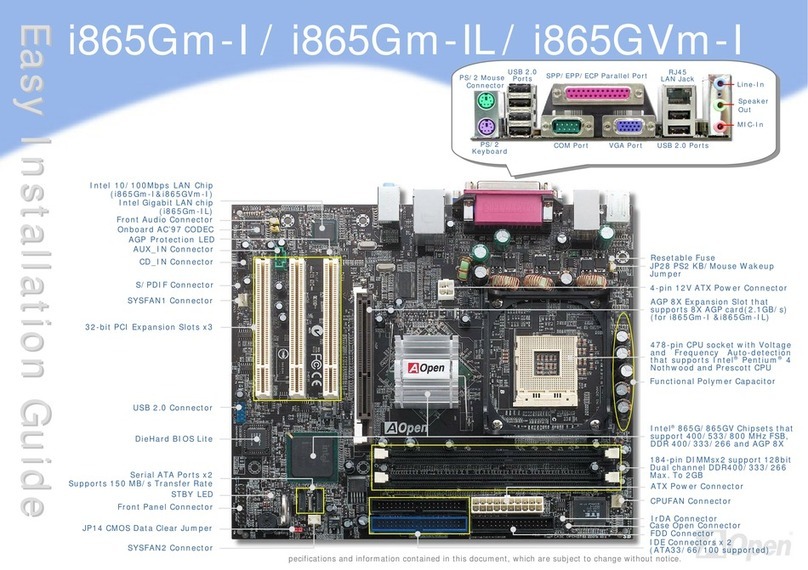
AOpen
AOpen i865Gm-I Datasheet

AOpen
AOpen AX3S Max User manual

AOpen
AOpen AK73 Series Setup guide

AOpen
AOpen NMCP68ST User manual
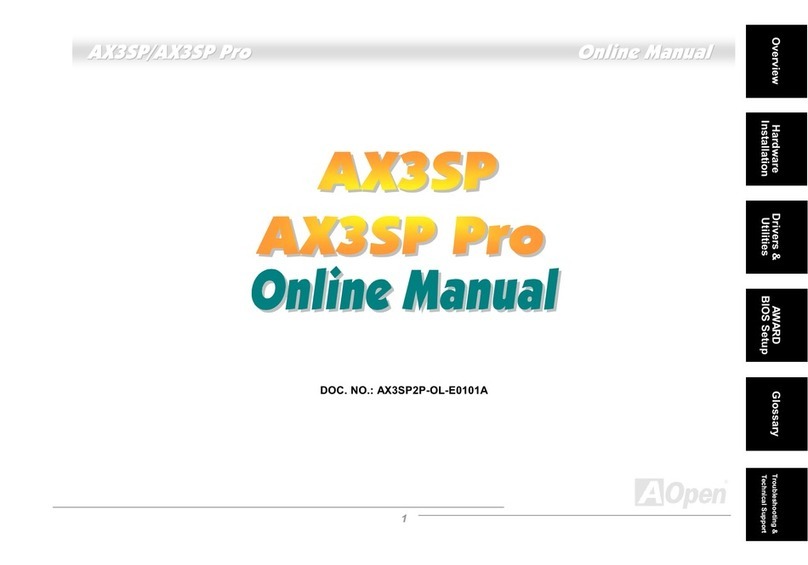
AOpen
AOpen AX3SP Pro-U Setup guide
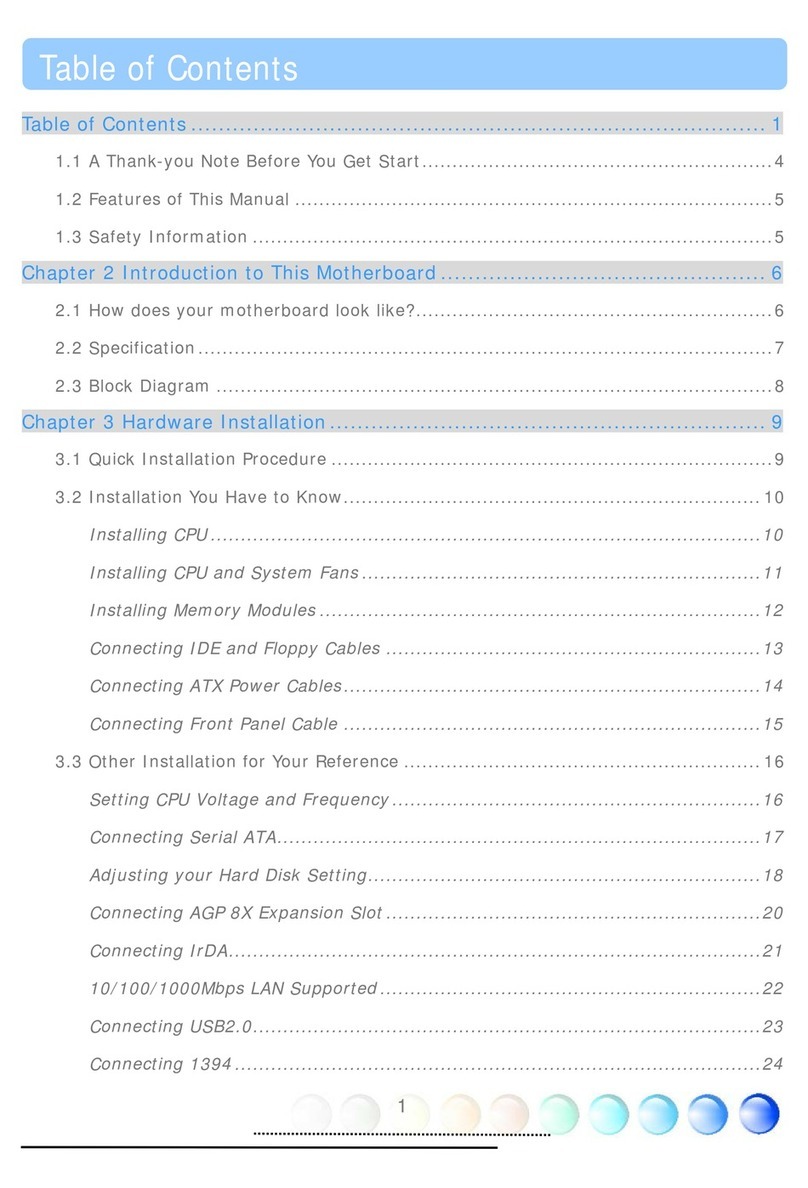
AOpen
AOpen AX4SG Max II User manual
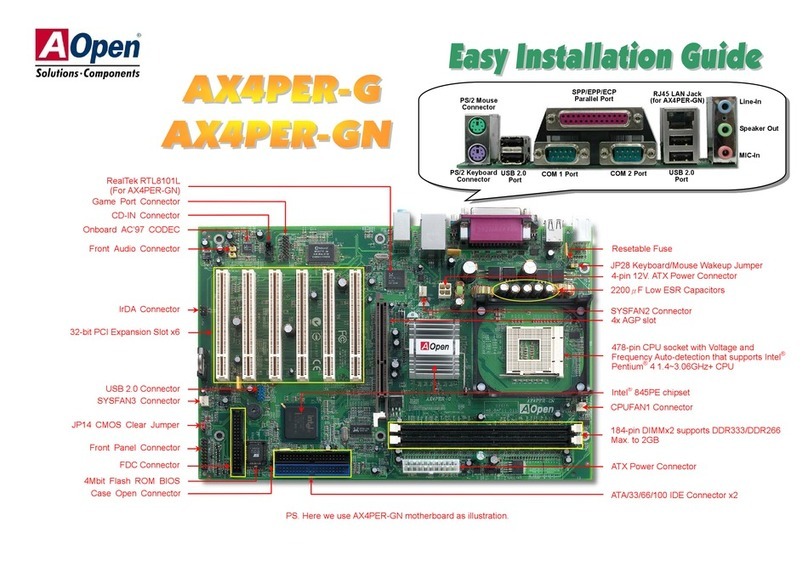
AOpen
AOpen AX4PER-G Datasheet

AOpen
AOpen AX4SPE Max II Datasheet
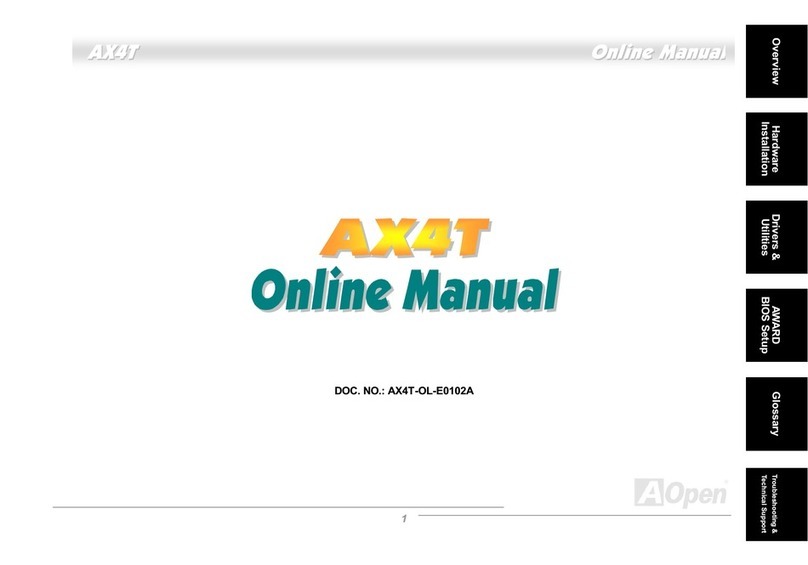
AOpen
AOpen AX4T II-133 Setup guide
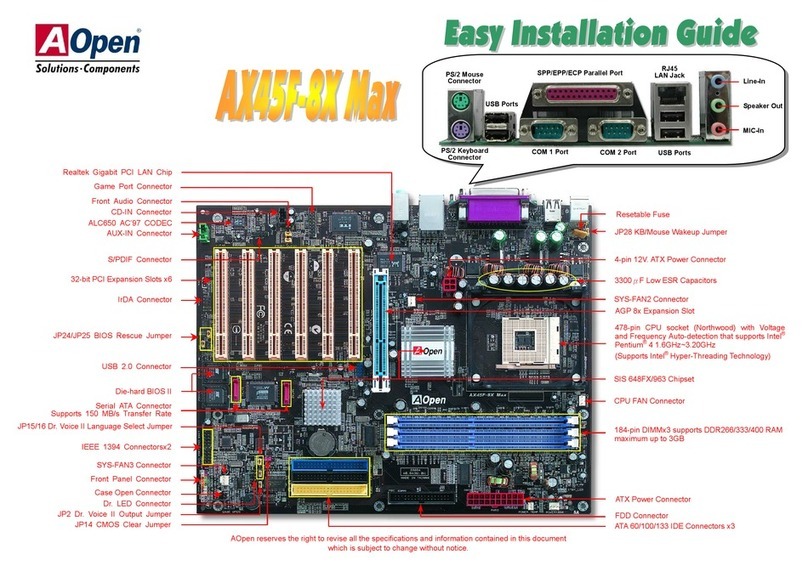
AOpen
AOpen AX45F-8X MAX Datasheet

AOpen
AOpen MK79G-N Setup guide
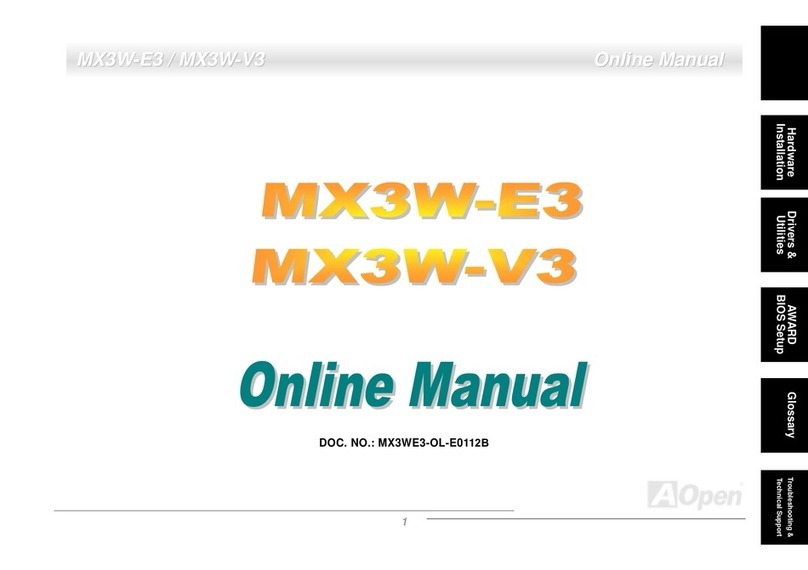
AOpen
AOpen MX3W-E3 Setup guide

AOpen
AOpen AX4GE Tube-G User manual
